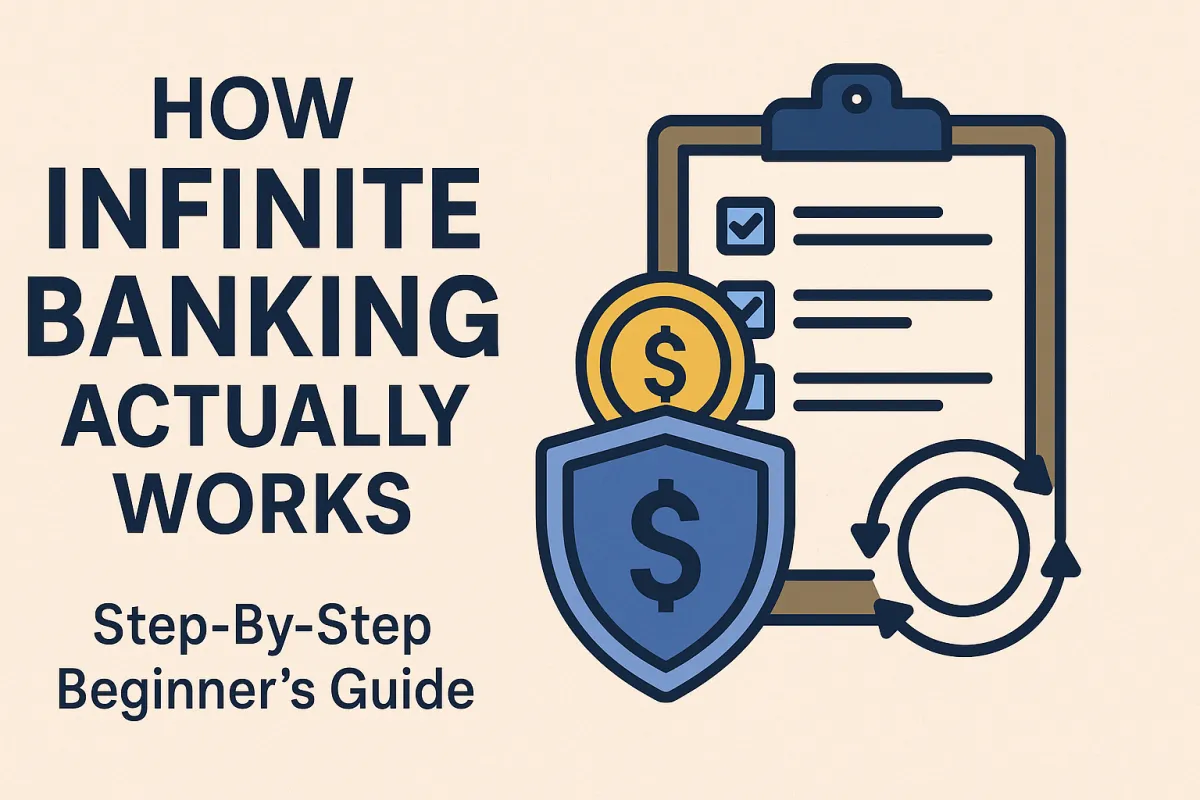
How To Start With The Infinite Banking Concept: A Step-By-Step Beginner’s Guide
If you’ve ever come across the terms “Becoming Your Own Banker” or the Infinite Banking Concept (IBC), you know it can feel overwhelming at first. My goal with this article is to break it down step by step so you can see how this process works and why it’s such a powerful tool for taking control of your finances.
Bottom line up front: Infinite Banking is not an investment, not a get-rich-quick scheme, and not about starting your own traditional bank. It’s a process. A way to take back control of the banking function in your life, recapture interest that’s currently leaving your household, and build wealth on your own terms.
You are already in the banking business. You deposit money, you borrow money, and you pay interest. The problem is, you don’t profit from it. IBC changes that by putting you in the driver’s seat.
I should add, working with a qualified advisor at any step can save you time, mistakes, and frustration. You can learn this on your own, but as the saying goes: “If you want to go fast, go alone. If you want to go far, go together.”
Step 1 – Education
Start with education. There’s no substitute for doing your own research. The best place to begin is R. Nelson Nash’s book “Becoming Your Own Banker.” It’s a pleasantly short read, but it lays out the foundation of IBC and the problem it solves.
From there, read blogs, watch YouTube videos, and get multiple perspectives. The reason this is so important is simple: this process puts YOU in the driver’s seat. An advisor can’t do it for you. You need to understand how it works so you don’t make mistakes.
Step 2 – Define the Problem
Now it’s time to take a hard look at your current financial situation. Ask yourself: how much interest am I paying to banks and lenders every year?
The easiest way to see this is to create a budget. List all your debts; mortgages, car loans, credit cards, lines of credit. Then break down each payment into principal and interest. (We have a calculator that makes this simple. Reach out and we can walk through it together!)
That number is the leak in your financial system. It represents the profit that banks are making off of you. For most people, it’s much higher than they realize. Once you see it, you’ll understand why change is needed.
Step 3 – Establish the System
Here’s where you start to build your own banking system.
A qualified advisor will help you figure out the right annual premium for your situation. Here’s the key mindset shift: premium is the solution, not the problem.
Why? Because the premium you put into a participating whole life policy becomes the capital in your system. That’s the money you’ll use to take back control of debts and expenses.
At first, policies aren’t very efficient. In the early years, the insurance company is recouping its costs. But by year 4 or 5, things shift. Every dollar you put in gives you more than a dollar of accessible cash value. And it accelerates over time.
Your premium buys you access to cash value through policy loans. Remember, a policy loan is not a withdrawal. Your money continues compounding daily inside the policy, even while you borrow against it. The loan is collateralized by your death benefit, not funded by withdrawing your cash value.
Yes, there’s interest on policy loans, but the growth of your policy almost always outpaces the cost. Then at year’s end, the insurer shares profits (including interest collected on loans) with policyholders through dividends. That’s how you recapture interest inside your own system.
Step 4 – Using the System
Now it’s time to put your policy to work. The goal of IBC is to keep money in motion, just like banks do.
Start by targeting debts and expenses you identified earlier. Take a policy loan, pay off a lender completely, then redirect those payments back into your own system.
Here’s the key: don’t change your habits, change where the money flows. If you were sending $500 a month to a bank, send that same $500 back to your policy loan instead. Now, instead of leaving your system, it’s replenishing it.
Once you’ve recaptured one debt, move on to the next. This snowballs over time. Eventually, you can even take control of your biggest debts, like your mortgage. With each step, more money is flowing back into your system, and you’re gaining more control.
Step 5 – Expand the System
Think of each policy like a bucket. Each has a maximum capacity. Once full, you can’t put more in.
That’s why most people eventually expand by opening additional policies — on themselves, their spouse, kids, even business partners (anyone with insurable interest).
The beauty of this is twofold:
You create more room for your cash flow.
You begin to build a family banking system, designed to serve multiple generations and transfer wealth tax-free.
This is how you ensure your children, grandchildren, and beyond never have to depend on a bank again.
Continuous – Re-Education
IBC isn’t something you “set and forget.” It’s a process you grow into. As your system builds, new opportunities open up — from financing cars and homes, to funding retirement, education, or investments.
The more you learn, the more powerful this tool becomes.
Final Thoughts
Infinite Banking is about more than a policy. It’s about controlling the banking function in your life. Once you do, you’ll see how much wealth was slipping through your fingers and how powerful it is to redirect that money back into your own system.
This is the path to financial control, freedom, and legacy. It all starts with education.